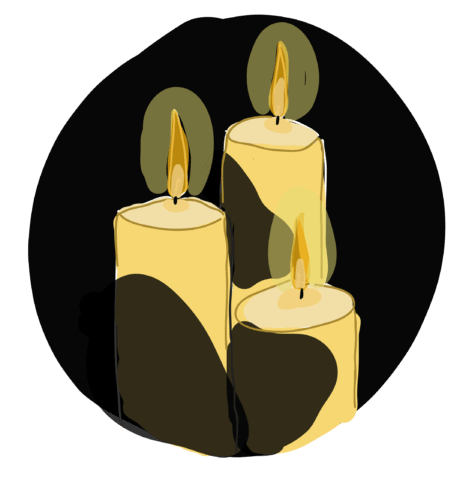On Nov. 21, a Transgender Day of Remembrance was held at the University of Saskatchewan by the Pride Centre and its volunteers. During this candlelight vigil, students, staff and members of the community gathered to remember those who lost their lives as a consequence of transphobia. This year, 295 names were included on the list of victims.
After Rita Hester, a transgender woman, was murdered in Massachusetts in 1998, American activist Gwendolyn Ann Smith launched the Remembering Our Dead web project, which led to the very first TDOR in Boston and San Francisco in 1999. Since then, other countries have adopted this ceremony to show solidarity with the global transgender community.
At the vigil on campus, Maaya Hitomi, master’s student in applied social psychology and speaker at the event, brought attention to the problems faced by transgender women of  colour.
colour.
“Transgender people face a higher rate of poverty than a large part of the populations. Mental issues are very high in trans-population. Suicide rates are high. Homelessness is high,” Hitomi said. “When we throw racism into the equation, it becomes exponentially worse.”
According to Hitomi, positive spaces for transgender people can become centered on the experiences of white individuals, interfering with the help transgender people of colour can receive. Hitomi further explained that trans-people face many challenges, including verbal violence such as crude jokes.
“Jokes are part of verbal violence and have an impact on self-esteem. As trans-people, we feel them. They turned into physical violence,” Hitomi said.
The vigil, hosted by the Pride Centre, was a way to give a voice to all of those who have been silenced due to fear and hate. Its main goal was to bring awareness to students about the abuses that transgender people suffer and how students can help eliminate this problem.
Araveen Ethder, a transgender woman and volunteer with OUTSaskatoon who spoke at the vigil, described the obstacles of growing up in a small closed-minded community.
“When I wanted to go out to visit some friends, I wasn’t allowed to have friends. If I were to go out, my own grandmother would call me a fag,” Ethder said. “It would be numerous things, something that would stick with me and make me feel so bad about myself that after I left her house, I was so afraid.”
After the vigil, in an interview with the Sheaf, Ethder explained that Saskatoon is friendlier for trans-individuals than many small communities.
“Since Saskatoon is a bigger community … there is a lot more to go to, more events, more people to talk to, more people to go and see, somewhere to go, somewhere safe,” Ethder said.
Ethder shared that, in order to make transgender people feel more welcome and accepted, students at the U of S and members of the Saskatoon community should practice tolerance.
“The thing I look for in the community is tolerance and acceptance between those who are different. Let them know you are there for them … If they need any help, let them know where to go. Let them know you are there as a friend,” Ethder said. “I also recommend therapists — people who are of the LGBT community. I recommend talking to them and clients who also experience this sort of thing.”
Similarly, Hitomi asked attendees to practice solidarity with everyone.
“Please, take time to connect with those who are like you and with those who aren’t like you, because with that we develop power,” Hitomi said.
Another attendee at the vigil, Elise Pallagi, presented a poem titled “The right man for the job,” which highlights the disconnect between the reality transgender people live and the image that Hollywood creates. In the poem, Pallagi addresses the frustration caused to trans-individuals by actors who portray the lives of transgender women but have no understanding of the hardships they have endured. Much of the poem was presented in a sarcastic tone.
“Such an authentic portrayal of the lives of trans-women … and a well-deserved Oscar for the right man for the job,” Pallagi read from the poem. “Our story lies in the lids of trade sex workers murdered in the streets of ignorance, silenced by men. I guess they hired the right man for the job.”
Alex Wilson, professor in the department of educational foundations and director of the Aboriginal Research Education Centre at the U of S, discussed the importance of coming together to commemorate the lives of the victims and of creating a sincere connection between people and communities. Wilson explained how sage smudging, which took place at the event, can help create that connection.
“A smudge is a way to recognize that there is continuity between us and those who have come before us and the continuity between this generation and the generations to come. When we smudge, we come to a place to think why we are together here as a group,” Wilson said.
She emphasized that everyone is part of the same community, regardless of sexual identity, sexual orientation, ethnicity or religion.
“We do have a place within the universe and we do have a place right here, right now, and by us coming together, we are energizing that force. In the high spiritual level, there is not such a thing as gender. The universe is love,” Wilson said.
The main message of the event was that of acceptance, tolerance and education about transgender issues, a message captured by the words of Kris Foster, a transgender man and vigil attendee.
“Love and understanding can fix anything … Love can overpower hate,” Foster said. “If I have to fight, I will fight with love. I will fight with nothing but love and peace and understanding for everyone, even if they still may dislike everything about me, I will still love them back.”
—
Gabriel Siriany Linares
Graphic: Lesia Karalash / Graphics Editor